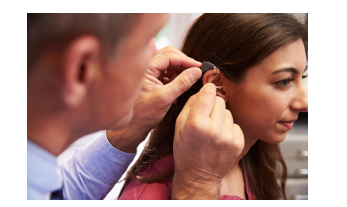As Apple® and Google® remove the headphone jack from the latest smartphones and switch to wireless earbuds, it’s safe to say that wired audio connections will soon become a thing of the past. These consumer electronics giants and leading startups are striving to develop "real wireless" headsets, and the main design challenge they will face is to maintain battery life around the clock. Interestingly, hearing aids solved this problem many years ago and can run for 7-10 days on a small battery. This article refers to the address: http:// The main difference between the two is that the hearing aids are the first to handle speech, designed to restore sound that is easy for the wearer to understand, while consumer earphones are more focused on providing stereo music. As a result, hearing aids typically do not contain a conventional Bluetooth® radio that consumes power and can receive audio streams directly from any mobile phone. However, it is difficult to find a high-end hearing aid with less than two radio configurations: a near-field magnetic induction (NFMI) radio for transmitting audio and data from ear to ear, and a multi-protocol 2.4 GHz radio for far-field communication. . Today's hearing aids use far-field radios that can be connected to mobile devices via Bluetooth low-power technology and exchange data at a moderate rate. If the accessories "use the same wireless language" (or protocol) to communicate, they can also transfer audio from remote accessories. Apple smartphones use their own proprietary wireless protocols to connect directly to most high-end hearing aids and transmit audio to the wearer's ear without the need for intermediate devices. These custom protocols operate on the worldwide 2.4 GHz radio band, which is the same as the traditional Bluetooth and Bluetooth low energy bands. Of course, this connection does have an impact on battery life, but the hearing aid wearer can take advantage of these wireless features for a few days before replacing the battery. The wireless connection brings some exciting new features to the hearing aid wearer. Not only can you easily remotely control your hearing aids with your smartphone, but you can also make adjustments and fine-tuning without restrictions. Mobile application developers can take advantage of advanced features such as geolocation and big data to effectively perform crowdsourced hearing aid settings for a given location and acoustic environment. This feature has already appeared on the market today, and with the recent over-the-counter (OTC) legislation in the United States, it will not be too long, and users can “adaptively†purchase on the shelves of local pharmacies. To take full advantage of these features, mobile applications must know how to communicate with hearing aids to adjust many parameters. Today's audiologists need to debug (adjust) hearing aids to the new wearer's condition with sophisticated debugging software running on a personal computer (PC). Now, because the wireless connection of smartphones is ubiquitous, it is easy to imagine that this process can also be implemented remotely when the hearing aid wearer is not convenient to debug the audiologist. In addition, the mobile application presents a subset of these complex adjustments through a novel user interface that allows selected customer segments to self-debug under the allowed conditions. This is an exciting new area where innovation is ripe. As part of the Ezairo® Pre-Configure Kit (Pre Suite), our Mobile Software Development Kit (SDK) provides middleware that enables hearing aids to seamlessly interface with smartphones. Developers can now use a high-level application programming interface (API) on iOS® and Android®, the same as they have been on the PC platform for many years. The combination of ON Semiconductor's hearing aid firmware package and Bluetooth low-power smartphones forms a complete solution that drives hearing aid manufacturers into a new era of intelligent, connected hearing aids. Pay attention to ON Semiconductor's official WeChat to learn more innovative and energy-efficient solutions For most wooden speakers, the material used is MDF medium density fiberboard, which is made of wood fiber or other plant fibers after crushing, fiber separation, drying, and then applying adhesive, and then hot pressing. An artificial board. The density is uniform, the surface is smooth, and the thickness is 5-30 mm. This type of sheet has excellent physical properties, is easy to decorate and process, so it is widely used in the manufacture and production of speakers. Some cabinets use multi-layer boards. Compared with MDF, multi-layer boards are lighter in weight and have better firmness. The sound effect of the speakers is also better, but the price is relatively expensive. They are mainly used in some professional stage speakers.The wooden speakers are also very beautiful in appearance and design, and they will give people an elegant feeling when used.Our company's wooden speaker products not only have high quality and competitive prices, is a Chinese supplier trusted by buyers all over the world market, choose us and you have chosen a bright and brilliant future Wooden Speaker,Wooden Bluetooth Speaker,Wooden Soundbar,Wooden Phone Speaker NINGBO LOUD&CLEAR ELECTRONICS CO.,LIMITED , https://www.loudclearaudio.com

